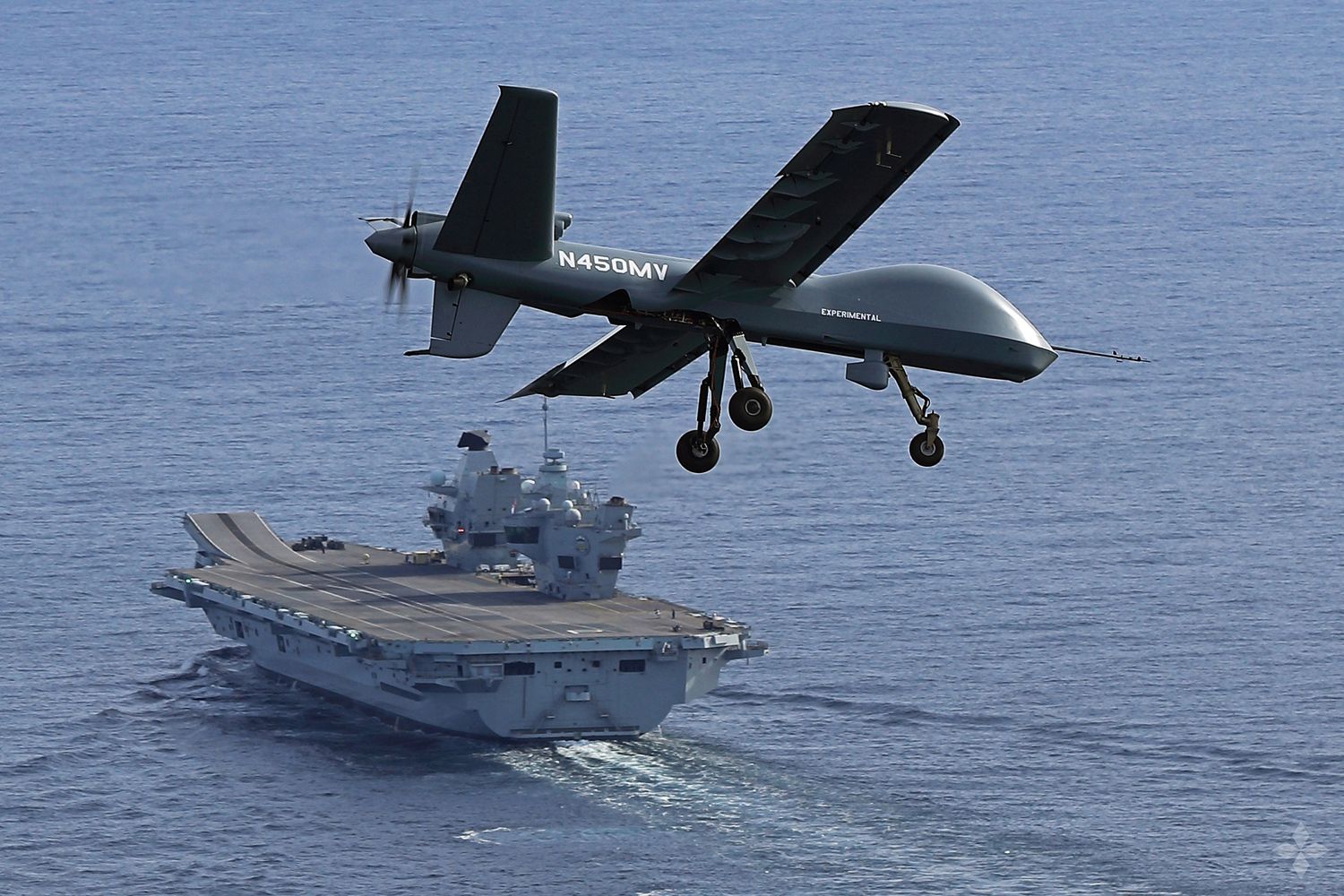GA-ASI demonstrates takeoff/landing STOL capability of its Mojave UAS from British aircraft carrier
General Atomics Aeronautical Systems, Inc. (GA-ASI) first demonstrated the short take-off and landing (STOL) capability of its Mojave unmanned aircraft system (UAS) from the deck of the Royal Navy aircraft carrier HMS Prince of Wales.
According to the company’s press release, the demonstration took place on November 15, 2023, when the Prince of Wales was sailing off the east coast of the United States, and the Mojave was controlled by a crew from a control station aboard the ship. The demonstration included takeoffs, loops and approaches, and ended with a landing on the aircraft carrier.
The future is here!!! pic.twitter.com/m8qw1xQN64
— HMS Prince of Wales (@HMSPWLS) November 17, 2023
“We applaud the Royal Navy’s foresight in embracing this unprecedented capability for its carriers,” said GA-ASI CEO Linden Blue. “We knew our STOL capability would enable a UAS to safely take off and land on the Prince of Wales. Seeing our Mojave operate successfully in this environment opens myriad new ways our aircraft can be used to support multi-domain naval operations.”
Mojave is a short takeoff and landing UAS demonstrator originally developed to demonstrate STOL operations at unprepared landing sites. Although Mojave shares common systems and components with GA-ASI’s Gray Eagle model, a STOL wing set option is also being planned as an option for the larger, more capable MQ-9B, which includes the SkyGuardian, SeaGuardian and the new RG Mk 1 Protector, currently being delivered to the U.K. Royal Air Force. This future MQ-9B version, designated MQ-9B STOL, is being considered by the Royal Navy and other navies operating aircraft from large flat-deck warships without catapults or arresting cables.
See also: First flight of Bayraktar TB3, the Turkish drone designed to operate from aircraft carriers
Royal Navy Director Develop, Rear Admiral James Parkin, whose team planned the trial, said: “The Mojave trial is a European first – the first time that a Remotely Piloted Air System of this size has operated to and from an aircraft carrier outside of the United States. The success of this trial heralds a new dawn in how we conduct maritime aviation and is another exciting step in the evolution of the Royal Navy’s Carrier Strike Group into a mixed crewed and uncrewed fighting force.”

Equipping UAS with STOL capability provides greater versatility and allows the aircraft to operate in areas previously considered unsuitable for UAS operations, including landing and takeoff from an aircraft carrier. The MQ-9B STOL will be able to carry the same payloads and perform the same missions as the SkyGuardian and SeaGuardian, including maritime surveillance, anti-submarine warfare (ASW), airborne early warning (AEW) and surface attack.
This is the second time a drone has landed on the deck of the aircraft carrier HMS Prince of Wales. The first was a W Autonomous Systems (WAS) transport drone with which, in early September, supply delivery trials were conducted.


Comentarios
Para comentar, debés estar registrado
Por favor, iniciá sesión